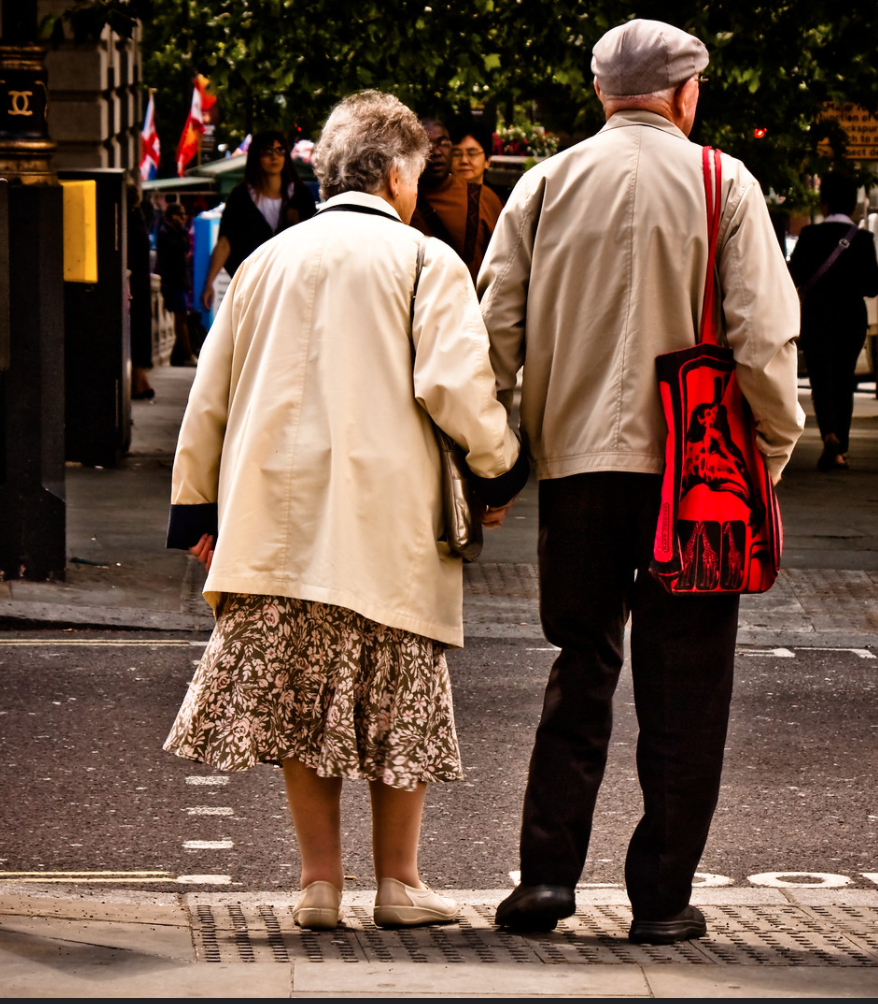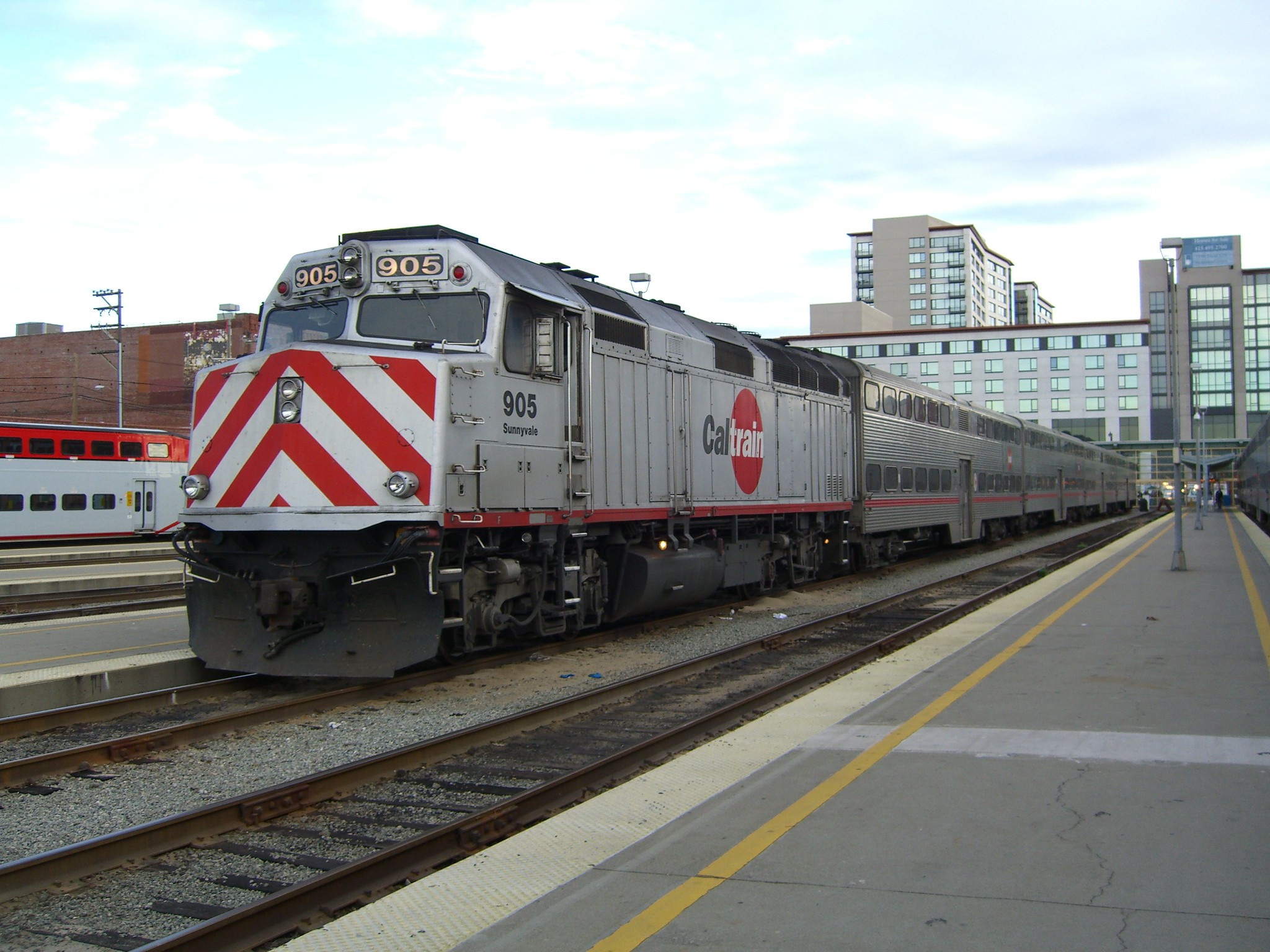Car Dependency Helped Build the Modern Nursing Home Landscape. During COVID-19, It’s Killing our Seniors.
12:26 PM EDT on April 30, 2020

Source: Creative Commons
Join us at the virtual Shared Mobility Summit on May 5-6 for powerful plenary speakers, hyper-relevant sessions, small-group discussions, a virtual Startup Spotlight, a virtual expo, and a hosted reception. We’ll address how transit and shared mobility can respond and recover from COVID-19 and work for everyone. REGISTER TODAY.
Perhaps no population has been more devastated by the coronavirus than the residents of eldercare nursing homes, assisted living facilities, and independent senior communities — many of whom ended up there because car-dependent neighborhoods have made it virtually impossible for them to age in place when they lose the ability to drive.
More than 11,000 U.S. nursing home deaths have been attributed to the virus, a number that's likely an underestimate, since the CDC didn't require the facilities to report suspected COVID-19 fatalities until April 19. In a particularly gruesome example of the undercount, the bodies of 17 people were discovered in a freezer in New Jersey's largest nursing home after an anonymous source tipped off authorities that the center's staff had become overwhelmed by an outbreak that claimed the life of 68 people. New York Gov. Andrew Cuomo said the nursing home environment was spurring "a feeding frenzy" for the virus.
But the impact of COVID-19 has not been evenly distributed across the senior community — and the reasons why have everything to do with the unique landscape of long-term care in America. And in many ways, the development of that landscape dovetails exactly with the development of our modern, car-focused road network.
Here's how — and why, if we want to do better by our seniors during this pandemic and beyond, we must radically rethink how we build our communities from the ground up.
How we lost the space to age in place
In the early 20th century, there were two primary options for aging Americans who needed some form of long-term care: living with family, or living in a "rest home," which were notoriously abuse-ridden, unsanitary, and primarily reserved for the poor. But the rest home model largely fell by the wayside in the mid-50s for two primary reasons: because the Hill-Burton amendments of 1954, which dedicated federal money to build medicalized nursing homes, and because of the Federal Highway Act of 1956.
The second factor is under-studied, but there is no doubt that the Automobile Age changed what it looks like to grow old in America forever. The highways directly begat the modern suburbs, and with them, a wave of single-family zoning requirements that made multi-generational housing options like mother-in-law suites illegal to build. Many suburbs also adopted regulations that forced grocery stores, doctors' offices, and other essential services out of otherwise walkable residential enclaves, essentially ensuring that people who didn't drive would never be able to meet their needs without the help of someone who did.
Put another way: when the first suburban seniors finally decided to give up their licenses because they were losing their vision, mobility, or cognition, they couldn't simply switch to walking to the grocery store on the corner — because their car-dependent suburbs probably had no corner grocery store to speak of. And if they wanted to move in with a relative who could drive, that relative legally couldn't build a mother-in-law suite in the backyard to house them.
Two parallel worlds in the long-term care landscape
There's no good head-count for how many otherwise-independent seniors have been forced into elder-only enclaves because their car dependent neighborhoods couldn't accommodate their changing mobility needs. But we do know this: as aging in place became increasingly difficult in the 60's and 70's, senior living communities surged by 140 percent, and more elders began to move into them, by choice or for lack of a better option, than ever before.
This jarring transition was at least made a little easier by the advent of Medicare and Medicaid in 1965. But even then, the very best facilities remained prohibitively expensive for most families — and today, they're still out of reach for the poor.
The average cost of a year of nursing home care averages about $100,000 — and like every aspect of our healthcare system, those who can afford to pay most of that amount out of pocket have dramatically more options rather than those who rely on public funding to help foot the bill. As such, long-term senior care facilities in America tend to fall into two very different tiers. About 85 percent of nursing homes are classified by healthcare experts as top-tier: well-staffed, uncrowded, usually private facilities dominated by wealthy, white residents. The other 15 percent, though, look very different: overcrowded, understaffed facilities with a high proportion of Medicaid recipients and African Americans among their residents.
Most of the facilities reporting the worst COVID-19 horror stories — like the one in New Jersey with 17 bodies piled in its morgue — fall into the second group. And it's not hard to speculate where most poor seniors end up when they have no choice but to enter long-term care when they can no longer live in their car-dependent neighborhoods, or with family.
"We're talking about facilities where residents often live in close quarters — two or three to a room," says Dan Stewart, Associate Director of the Aging Equality Project for the Human Resources Council. "And on top of that, the staff is often underpaid, overworked, without resources like adequate personal protective equipment. Often, they work part time for multiple facilities, commuting between two or more of them in a given week."
What this has meant in the age of COVID-19 is that, despite residents sheltering in place, the essential workers who care for them are unknowingly bringing the virus in — and then bringing it to the other nursing homes at which they work in order to make ends' meet.
"We put long-term care facilities under so much pressure to keep residents safe, but we don't always provide them with the resources they need to do it," Stewart says. "We should really be questioning all of these systems and learning some lessons once COVID-19 is over."
Not-so-splendid isolation
But even residents of nursing homes that aren't dangerously crowded are struggling with social isolation during COVID-19.
Many long-term care facilities have suspended their visitor programs to protect their vulnerable residents — a necessary move that's nonetheless devastating for seniors already coping with epidemic levels of loneliness. Over 40 percent of residents of nursing homes in one 2019 study reported feelings of social isolation, and that was before the pandemic made it impossible for them to get socially-distanced face-time with their families.
"People are getting creative, putting on musical performances for residents in the courtyards outside their rooms," Stewart says. "But it's just not the same as the kind of interaction you get if you're still living in the community."
A major issue in many nursing homes even before the pandemic was a scarcity of phones on wards, especially among low-income populations who can't afford personal cell service. Staff time to help cognitively impaired residents operate the phones is running scarce, too.
"I talked to a caregiver just the other day who told me she was helping residents in hospice reach out to their families on donated iPads, and they had to cut people's time speaking to their loved ones short because they just didn't have enough phones and tablets for them all, never mind the staffing," Stewart says. "Social isolation doesn’t just impact us in terms of loneliness. It also impacts our cognition, our resilience, our end-of-life experience."
It's a far cry from heartwarming stories of families gathering on grandma's front lawn to wish her a happy 95th birthday from a social distance. It's a hard truth, but seniors who are able to age in place have ways to connect with their loved ones right now that those in long-term care facilities simply don't — especially if those communities are walkable and have invested in adequate paratransit.
During COVID-19, some communities have stepped up on the latter front, expanding the definition of elder transportation to include not just on-demand buses, but also grocery delivery and medical transportation to testing facilities. Groups like AARP say these services have become a lifeline for many, not least low income seniors who can't depend on aides, and those who are still working in essential professions into their later years. We should be advocating to expand these programs now more than ever — and keep them when the pandemic subsides.
How to undo car dependency to help seniors during a pandemic
COVID-19 is exposing just how deep the rifts in our broken eldercare system run — but it certainly didn't put them there in the first place. And even if we never experience another pandemic in our lifetimes, we owe it to our elders — and, if we are young today, our future selves — to make car-free living an option in more places, no matter how our abilities change as we age.
There are simple, common-sense things we can do:
- End suburban zoning.
- Legalize mixed-use neighborhoods and start building corner stores, so everyone can get to essential services without a car, no matter their mobility level.
- Legalize mother-in-law suites and other multigenerational family structures.
- Expand paratransit and make it free.
- Make our streets comprehensively safe, car-limited, and ADA accessible.
The list, of course, goes on — and that's not even to mention the raft of changes to our healthcare, social welfare, and racial equity programs that intersect with these concerns. But now, more than ever, we know what we need to do — and have an obligation to start confronting the ways our car-obsessed communities have been failing our elders.
Kea Wilson has more than a dozen years experience as a writer telling emotional, urgent and actionable stories that motivate average Americans to get involved in making their cities better places. She is also a novelist, cyclist, and affordable housing advocate. She previously worked at Strong Towns, and currently lives in St. Louis, MO. Kea can be reached at kea@streetsblog.org or on Twitter @streetsblogkea. Please reach out to her with tips and submissions.
Stay in touch
Sign up for our free newsletter
More from Streetsblog USA
Talking Headways Podcast: Highway Fighting in Texas
Jeff Wood talks to Megan Kimble about an amazing footnote to the creation of the Interstate Highway system.
The Dawn of the ‘Non-Driver’ Movement: A Conversation with Anna Zivarts
"At the end of the day, there are going to be folks who still can't drive and can't afford to drive — and there are still going to be a lot of us."
Thursday’s Headlines Fight a Suburban War
The way Politico lays out the battle lines, it's not just drivers versus transit users, but urban transit users versus suburban ones.
California Leaders Celebrate Ten Years of Climate Action
Air Resources Board report highlights progress funded by the California Cap-and-Trade Program.
How Car-Centric Cities Make Caring For Families Stressful — Particularly For Women
Women do a disproportionate share of the care-related travel their households rely on — and car-focused planning isn't making matters easier.




